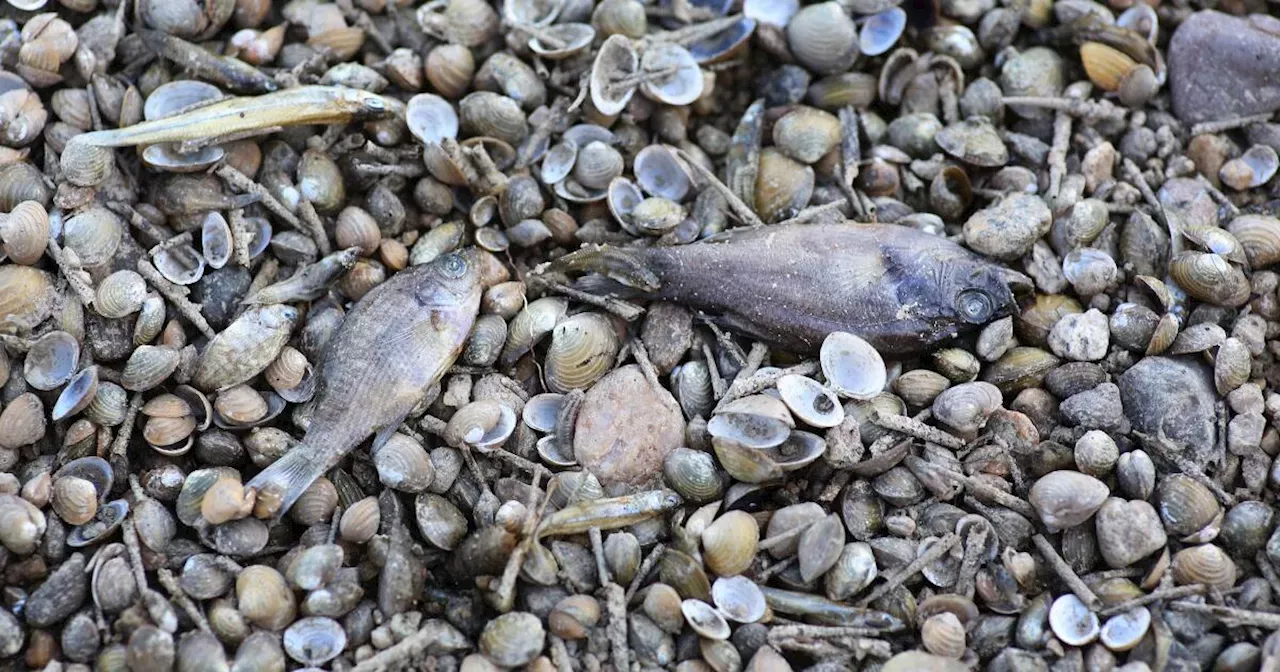They are some of Prince Edward Island's most popular summer visitors, and now one family of ospreys is even attracting international attention thanks to a 24/7 online video feed. Tim Banks installed an osprey platform at his summer cottage in Old Tracadie Harbour on P.E.
I.'s North Shore in July 2020 through a program offered by Maritime Electric. "It's the best $800 I ever spent in my life because we get a lot of fun out of it," Banks said.

"Four or five minutes after the heavy equipment left the site, they started building a nest. So we didn't get a camera installed till near the end of September when they left, and we've been following them ever since." The young ospreys at the Old Tracadie Harbour platform eat fish brought to them in the nest by one of the adults.
(YouTube/Blackbush at Old Tracadie Harbour) The ospreys have returned every year since, raising two chicks in both 2021 and 2022, three in 2023, and another trio that hatched this year. Banks said the family of ospreys has now built two more nests in nearby trees. Damaged during Fiona In 2022, the birds headed south just two days before post-tropical storm Fiona, which blew the nest off the platform.
A camera broadcasts the birds' activities on YouTube, live and around the clock. (Mare McLeese/CBC) "We got up in the morning ..
. and the nest was missing and it was in shambles on the ground. I found parts of it later and I thought, 'Oh my God, is that going to prevent them from coming back?'" Banks said.
"But in the spring, they arrived in mid-May, which is generally when they come, and within moments of arriving, the two of them frantically built the nest." Osprey whisperers: Charlottetown students hope to attract the majestic birds to a new home Some birds will be scrambling for nest space after Fiona took down their trees Banks said the osprey parents are protective of the nest, and keep a close eye on anything that gets close. "My dog, anybody that lives here on our property, the birds get familiar with them and you don't hear anything," Banks said.
"But as you guys today showed up, they even called out their relatives from the neighbouring nest up the road there and they were circling around, just suspicious of new people." The feed from the osprey cam is shown on a big screen at the nearby Fin Folk Food restaurant, while the livestream on YouTube has nearly 200 subscribers — including one viewer who's studying it for research purposes. Banks recently had the platform's location, date and time stamp added to the feed to help the researchers.
"They want to see when they ate and what they were feeding [the chicks] and when they were starting to fly and when they were leaving the nests, and so on," Banks said. "And so we've added that to our webcam." 'They want to feel a piece of nature' Banks said some additional perspectives on the nest will be added for next season.
"We're going to put a couple of more cameras up there because we have a perch, and sometimes when people are watching them, they see the birds in the nest and think the parents have left," he said. "But they're pretty protective. There's always one up in the perch and it would be nice to get a camera shot of that.
...
So we're going to try to do that." Tim Banks plans to add more cameras to the platform in time for the ospreys' return in 2025. (Mare McLeese/CBC) Banks said a third camera will also be pointed skyward to catch the birds' activities, which include annual fights between the ospreys and eagles.
"We'll often see people come right up underneath with their cameras and taking pictures," Banks said. "Some people will just sit in their cars down by our ice cream booth with binoculars and watch them, even though they could look at them in the camera, they just want to feel a piece of nature." 'It's incredible' At the Island Honey Wine Company in Wheatley River, owner Charles Lipnicki keeps a close eye on an ospreys platform that was built there by a local watershed group.
"The ospreys arrive back to the Island in usually mid-April, and this year they arrived, I think it was the 21st and it exactly coincided with two years previous," Lipnicki said. "They'll leave towards the end of August, beginning of September, and if they're lazy, they'll only fly south as far as Florida, and if they're ambitious they'll hit all the way to Brazil." 'The first day they fly, it's incredible,' says Charles Lipnicki, owner of Island Honey Wine Company in Wheatley River.
(Mare McLeese/CBC) There appears to be three fledglings in the nest this year, which Lipnicki said is a good sign that the osprey population will grow in the years ahead. "Sometimes we see the little ones perched on the edge of the nest and they're feeling the wind. And once I really got lucky, I got to see the mother in a spruce tree in the hedgerow calling.
You could just imagine what must be going through their minds. 'You want me to jump?'" he said. "Eventually they do leave the nest and the first day they fly, it's incredible.
Figure eights and loop de loops. It's like they're on on aerial roller coaster. It's beautiful.
" Lipnicki also brings visitors to see the nest during tours of the property, something he said the birds are now quite comfortable with. 'The ecosystem is working' Matt Ginn, a biologist with P.E.
I.'s forests, fish and wildlife division, said the osprey population on P.E.
I. is doing well now, but that hasn't always been the case. Wildlife biologist Matt Ginn views the osprey platform at the Island Honey Wine Company from the park at Rackham's Pond in Wheatley River.
(Mare McLeese/CBC) Ginn said ospreys are listed as secure through the Atlantic Canada Conservation Data Centre, and the population is considered low-risk worldwide. "In the 50s, 60s and 70s, a lot of raptor species were in decline, but the last few decades, they've been rebounding," he said. "So most raptor species are doing quite well, actually.
" Eagle population flying high on P.E.I.
Dead osprey prompts warning from P.E.I.
farmer about trash Ginn said the osprey platforms allow Islanders to get a closer look at the species. "I think there's a lot of value in it. Viewing that sort of thing kind of connects you to something that's real," he said.
"I like that they're an apex predator, meaning they they're at the top of the food chain. If they're doing well, that means that the food that they want [is] doing well and the ecosystem is most likely working.".



















